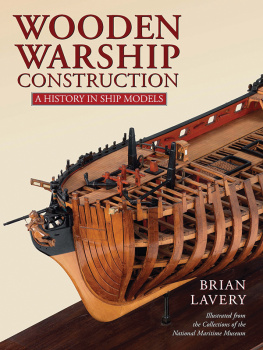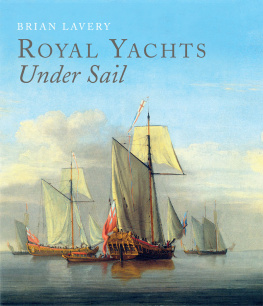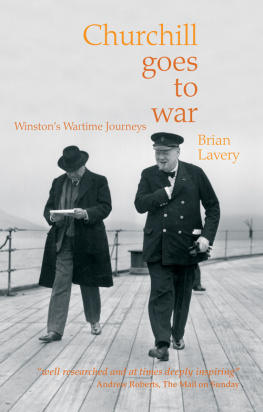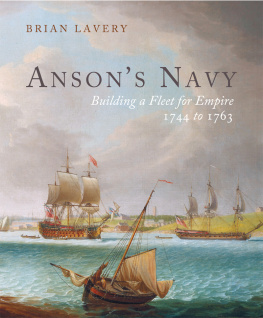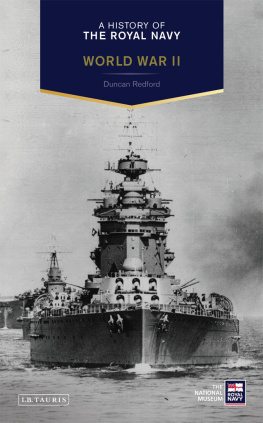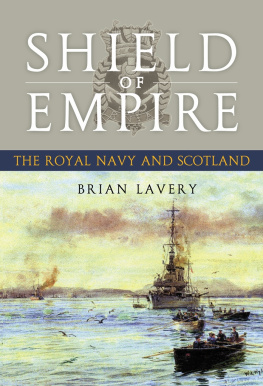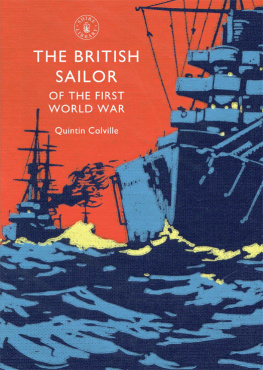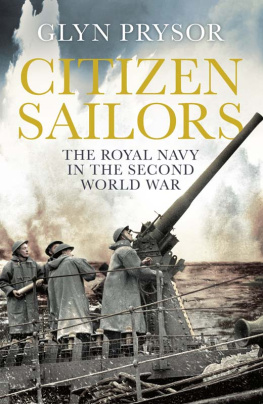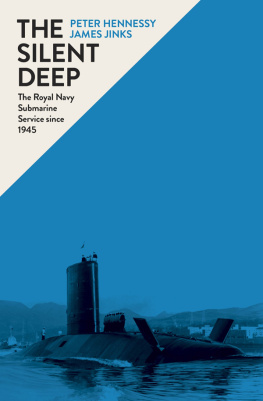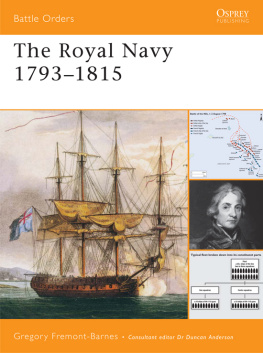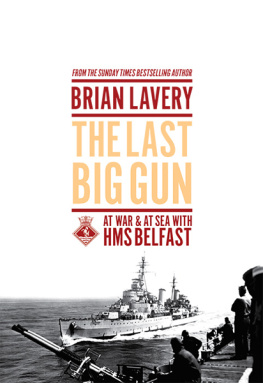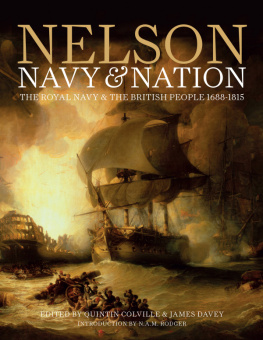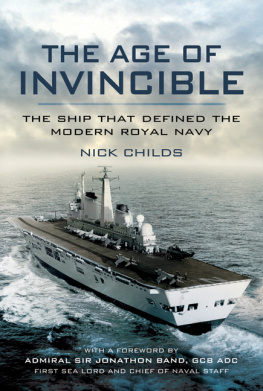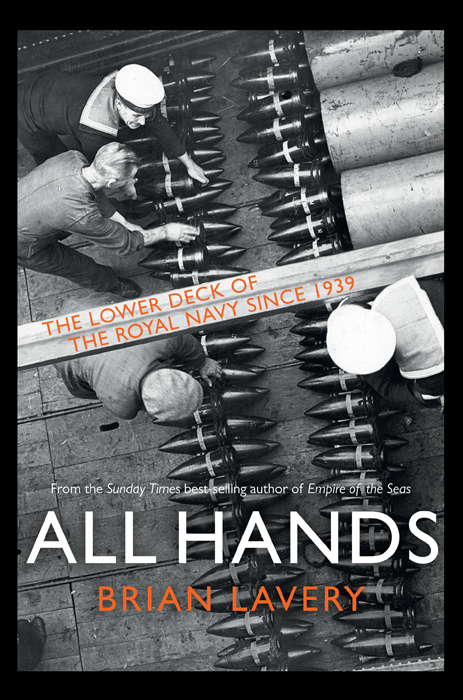More great titles from Conway

www.conwaypublishing.com
www.facebook.com/pages/Conway-Publishing
www.anovabooks.com

A Conway Maritime book
Brian Lavery, 2012
First published in Great Britain in 2012 by Conway, an imprint of Anova Books Company Limited,
10 Southcombe Street,
London W14 0RA
www.anovabooks.com
www.conwaypublishing.com
All rights reserved. No part of this publication may be reproduced, stored in a retrieval system, or transmitted in any form or by any means electronic, mechanical, photocopying, recording or otherwise, without the prior written permission of the copyright owner.
Brian Lavery has asserted his moral right to be identified as the author of this work.
British Library Cataloguing in Publication Data:
A catalogue record for this book is available from the British Library
First eBook publication 2012
eBook ISBN 9781844861996
Also available in hardback
Hardback ISBN 9781844861552
Anova Books Company Ltd is committed to respecting the intellectual property rights of others. We have made all reasonable efforts to ensure that the reproduction of all content on these pages is included with the full consent of the copyright owners. If you are aware of any unintentional omissions please contact the company directly so that any necessary corrections may be made for future editions. Full details of all the books can be found in the Bibliography.
Editing and design by David Gibbons
The illustration .
The illustrations are from Jackspeak: A Guide to British Naval Slang and Usage and were created by the cartoonist Tugg. The illustrations appear by courtesy of Rick Jolly.
To receive regular email updates on forthcoming Conway titles, email with Conway Update in the subject field.
INTRODUCTION

The lower deck of the Royal Navy has made as much impact on the world as any body of men in history and not just because of the leadership and training of its officers. The grand themes of British history empire, industry, war and class are all strongly represented in naval history, and class is particularly sensitive for the status of the lower deck. The lower deck seamen also left their mark on world culture, for example in vocabulary, manners and dress. One of the aims of this work is to look at how far this continues into the present day, when industry, class and empire are far less relevant than they were, and wars are distant and tend to have far less impact on British society.
As this is the conclusion of a three-volume work, it might be useful to repeat the definition of the lower deck as a group of men (and later women) who perform the essential tasks of any navy with little expectation of promotion to the higher ranks. This does not exclude the possibility of a minority of its members rising to officer status, but it does not include cadets and midshipmen, who are recruited in the belief that they will eventually be commissioned.
In many ways the lower deck is a closed world seamen naturally spend a good deal of time at sea, and for reasons of security and discipline they are not usually encouraged to talk to the press or the public during their service. Their accommodation is usually hidden well below decks in the ship visitors are usually shown the bridge and the operations room, and entertained in the wardroom if they are distinguished enough, but they rarely penetrate the mess decks. Most of the information I have used comes from two sources: official accounts and policy, such as reports, policy documents and fleet orders; and lower deck memoirs and diaries, mostly written or made available some time after the event. I believe that between the two of them it is possible to construct a reasonably true account of the lower deck story, even if it does not necessarily match the experience of any particular individual. These two sources are occasionally supplemented by the writings of outsiders. These include the numerous, and often quite famous, people who spent some time on the lower deck in 193945; a few accounts by national servicemen of the 1950s; and reports by journalists and television producers in later years.
As in the previous volumes, I have not dealt with the Royal Marines in any detail but only as they affect the rest of the lower deck, because they would be better served by their own history. I have been rather cursory in the story of the Womens Royal Naval Service, as for reasons of class and type of service its members were not truly of the lower deck until near the end of the twentieth century when they began to go to sea, and the womens service was abolished as a separate body.
Writing about contemporary naval history is fraught with danger, as many of the full facts are still to emerge and a certain amount of perspective is always needed. Clearly it is too soon to write a full history of any aspect of the navy in the last thirty years or so, and particularly of the lower deck. The public records are not yet open, few memoirs have been written, and many of the stories involved are still unfolding. With massive effort it might be possible to pursue it through the Freedom of Information Act and a large programme of oral history, but that is not a realistic aim for a book of this nature, and anyway it would be far from conclusive. The last chapters are therefore intended to bring the story to the present day, to illuminate some of the lessons and tie up some of the loose ends.

When war broke out in 1939, the navy was a very conservative service, and it is worth repeating the final paragraph of the last volume:
Twenty years of peace gave the navy a breathing-space between two great conflicts, but, like British society as a whole, it had failed to carry out social reform. Starved of funds, it had used what money it had to build more ships, unlike the United States Navy, which did much to improve the conditions of its men. The gap between officers and ratings was as wide as ever, and it was still difficult for a rating to get a commission. Nothing had been done to reform the boys training ships, which were increasingly out of step with society. Long service was valued too highly, and the three-badge AB was not always a positive force. The navy was still failing to attract the growing middle class into its ranks, and it had done little to improve family welfare. All these issues would need attention eventually, but for the moment the navy was about to be locked in a life-or-death struggle in which it would rely more than ever on the loyalty, skill and determination of the lower deck.
There had been comparatively little change in warship design since the First World War battleships, destroyers and submarines had developed, but there were no revolutionary developments. In aviation, the one area where real change was taking place, progress had been hampered by the conflict between the navy and the RAF over control of the Fleet Air Arm. In underwater warfare, the navy tended to be over-optimistic about the value of the asdic in detecting the enemy. The lower deck was proud of its traditions, mostly established late in the nineteenth century. It was generally as conservative as the rest of the navy, despite its role in the Invergordon Mutiny in 1931. Because of strike-breaking and the navys association with hierarchy and imperialism, young men with radical politics rarely joined. Once in, boys were trained by a brutal system that seemed out of step with the rest of society. More mature sailors tended to respect tradition and deplore careerism. Accelerated promotion was regarded with suspicion, and one captain commented, few men on the Lower Deck regard special promotion with any enthusiasm. Trade Unionism and an innate fidelity to their own kind limit their aim to one of general security, i.e., equal opportunity to rise steadily on a pay scale. Many more did not seek promotion at all, and there was a glut of three-badge ABs, men who had served at least 13 years, to earn three good-conduct chevrons, without advancing beyond the basic grade. Such men tended to dominate the mess decks, and younger leading seamen and petty officers were often in awe of them. Though the lower decks conduct tended to be far better than in the past, there were still severe punishments for trivial offences. The navy of 1939 was still at the forefront of British society, still the largest in the world (despite nominal parity with the Americans) and still the most prestigious of the British services. It was about to cope with its greatest tests, in world-wide war, rapid expansion and the integration of new and unfamiliar personnel and technology.




